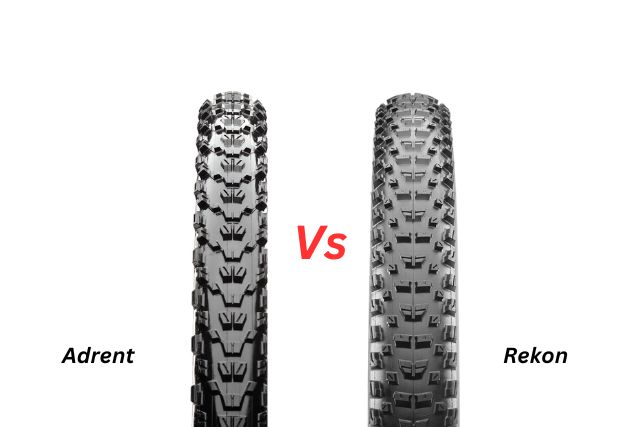
Ardent and Rekon are two popular models of mountain bike tires from Maxxis, a leading brand in the industry. Both tires are designed for aggressive trail riding, but they have different strengths and weaknesses depending on the terrain, rider preference and riding style.
Here, we will compare and contrast the features, performance and durability of Ardent and Rekon tires, and help you decide which one is best for your needs.
Ardent
Ardent is a versatile tire that can handle a variety of conditions, from hardpack to loose over hard, from rocks to roots. It has a large block-shaped tread that provides good grip and braking traction, as well as ramped knobs that reduce rolling resistance and improve speed.
Ardent also has a high-volume casing that offers a comfortable ride and protects the tire from punctures. It is available in different sizes, widths and compounds, so you can choose the one that suits your bike and riding style.
Rekon
Rekon is a more aggressive tire that excels in loose and technical terrain, where it can dig into the dirt and provide excellent cornering and climbing traction. It has a similar tread pattern to Ardent, but with wider and taller knobs that offer more bite and stability.
It has a reinforced casing that adds extra protection and durability, as well as a 3C MaxxTerra compound that balances grip, rolling resistance and wear. Rekon is ideal for riders who like to push their limits on challenging trails.
Related: Magic Mary vs. Assegai: Compared
Ardent Vs Rekon
Both Ardent and Rekon are high-quality tires that can enhance your mountain biking experience, but they are not interchangeable. Depending on your preferences and riding conditions, you may find one tire more suitable than the other.
Here are some factors to consider when choosing between Ardent and Rekon:
Terrain
Ardent is more adaptable to different types of terrain, while Rekon is more specialized for loose and technical terrain. If you ride on mostly hardpack or mixed surfaces, Ardent may be a better choice. If you ride on mostly soft or rough surfaces, Rekon may be a better choice.
Speed
Ardent has lower rolling resistance than Rekon, which means it can roll faster and smoother on flat or downhill sections. Rekon has higher rolling resistance than Ardent, which means it can slow you down on flat or downhill sections, but also give you more control and traction on uphill or cornering sections.
Grip
Rekon has more grip than Ardent, especially in wet or muddy conditions. Rekon’s wider and taller knobs can dig deeper into the soil and provide more contact area with the ground. Ardent has less grip than Rekon, especially in wet or muddy conditions. Ardent’s smaller and ramped knobs can slide more easily on slippery surfaces.
Durability
Rekon has more durability than Ardent, thanks to its reinforced casing and 3C MaxxTerra compound. Rekon’s casing can resist cuts and tears from sharp rocks or debris, while its compound can resist wear and tear from frequent use.
Ardent has less durability than Rekon, due to its standard casing and single or dual compound. Ardent’s casing can be more prone to punctures or damage from sharp rocks or debris, while its compound can wear out faster from frequent use.
Conclusion
Ardent and Rekon are both great tires for mountain biking, but they have different characteristics that make them suitable for different situations. Ardent is a versatile tire that can handle a variety of conditions, but it may lack grip or durability in some situations. Rekon is an aggressive tire that excels in loose and technical terrain, but it may have higher rolling resistance or lower speed in some situations. The best way to choose between them is to consider your personal preferences, riding style and riding conditions, and find the tire that matches your needs.
